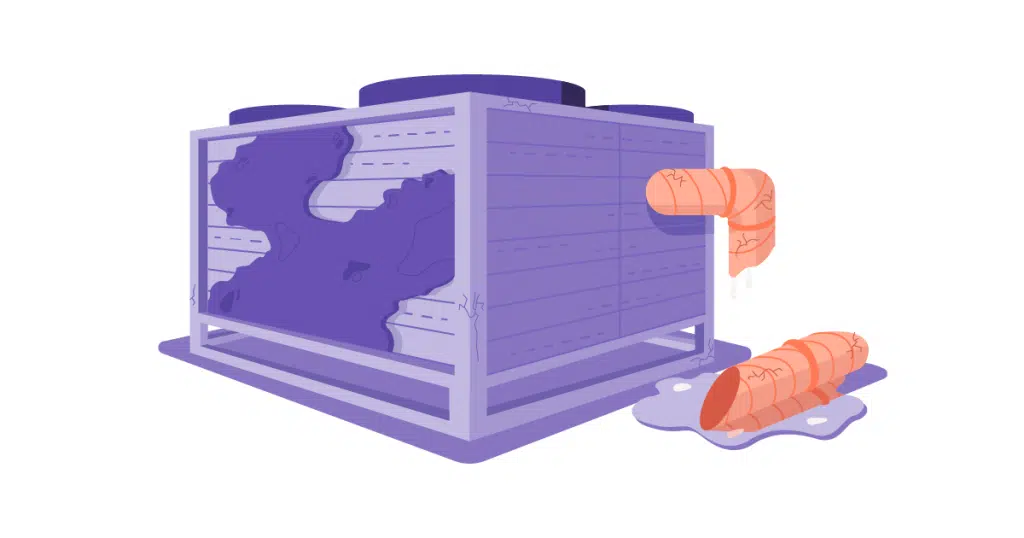Preventive vs Predictive Maintenance (2021 Guide) | FieldInsight
While preventive and predictive maintenance might sound like one and the same, they have quite a few differences between them. In the HVAC industry maintenance plays a large part in asset lifecycle and reducing equipment downtime.
Without a great maintenance plan in your business, you will find keeping a steady stream of cash flow and customer satisfaction is hard to reach.
Equipment failure can be a large source of distress for many HVAC businesses and their clients. When assessing the run to failure time of a client’s assets, the debate over preventive maintenance vs predictive maintenance can reduce unplanned downtime if implemented correctly.
Maintenance is the key for success in the HVAC industry and with a great CMMS based preventive maintenance software, you will have the ability to systemise your workflow and maximise your results.
For both predictive and preventive maintenance you first need a great maintenance team in your business that are equipped with the correct tools and training.
What is preventive maintenance?
Preventive maintenance is essentially an arranged maintenance schedule to prevent any defects from occurring rather than reacting to issues as they happen.
The key to preventive maintenance is all about avoiding issues and reducing downtime. In scheduled preventive maintenance you will stick to a timed program that is relatively low cost based and easy to execute.
What is predictive maintenance?
Predictive maintenance (or condition based maintenance) is scheduled based on the condition and wear and tear of a customer’s assets.
When implementing a predicted approach in your maintenance, you will rely on the inspection and analysis of equipment that will then prompt your maintenance. This can mean a higher initial cost to implement the correct equipment and analysis but can save costs by reducing the need to schedule appointments when your assets are in peak performance.
The Key Differences Between Preventive And Predictive Maintenance
It can depend on the type of assets you have for determining which is better in preventive vs predictive but there are a number of factors to consider when creating your maintenance plan.
While both predictive and preventive maintenance can be a cure for asset failure, there are a few differences that set them apart in their approach and results they deliver. Below we run through the five main differences that set apart these maintenance strategies based on their data and indicators.
HVAC Maintenance
Schedule and Triggers
Time vs condition? When talking about preventive vs predictive maintenance, the main difference is between the triggers for your scheduling. Predictive maintenance is triggered by the condition monitoring sensors of the asset and you will usually find there will be less maintenance needed.
While preventive maintenance focuses on scheduled maintenance to avoid repairs. Preventive maintenance tends to be set at a predetermined schedule, whether that is annually or monthly.
Cost effective
While predictive can have additional expenses due to the initial cost of condition monitoring tools, you may find you save money in the long run with less service work required. However this type of maintenance strategy will vary depending on asset type.
Predictive maintenance will also reduce the cost of labour and materials that would usually be spent in reactive maintenance. Unlike preventive strategies, predictive maintenance only services the assets when they have lowered performance levels. This means less materials are needed and less time spent unnecessarily on site.
The operating costs of preventive maintenance can usually be kept quite low when a regular schedule is in place. When your assets are getting the regular servicing they need, your main costs will be labour for the technician to perform the work.
Targeted Issues
When you implement a predictive maintenance program into your business, you will be able to quickly target any issues and know exactly where and what the issue is. This can save a lot of time and trouble in your maintenance operations when your customer is waiting for results.
Alternatively, with preventive maintenance you don’t have the conditioned based equipment or data behind you to tell you where the issues might lay. If your technician has missed something in their last service and it has now developed into a defect, it can become a time consuming task to identify the unknown problem.
The main difference here in preventive vs predictive maintenance is the targeted approach you gain with predictive strategies that can give you the upper hand.
Machine downtime
With preventive maintenance you will find there is less equipment downtime compared to a reactive maintenance plan as you have regular contact with the asset to ensure no major defects occur.
However when defects do occur in preventive maintenance, they don’t have the targeted equipment that can monitor the condition and let you know what the exact problem is.
When your predictive maintenance strategy picks up on lowered performance parameters you can specify and get the correct part number in the one trip to site. While with preventive maintenance you may spend more time between site and office, identifying the issue and then determining what parts you may need.
Unnecessary maintenance
The key downfall of a preventive strategy is the repetitive maintenance that can sometimes be unnecessary. While machine failure will occur as a result of a neglected maintenance management, it can also be triggered by unnecessary maintenance that leaves assets open to more human errors.
With condition based maintenance or predictive maintenance, the asset is only serviced when needed, based on performance and sensors. This ensures less time that the assets are exposed and open to maintenance based issues.
Preventive maintenance software
When looking at predictive vs preventive maintenance, you will find they both focus on the main target of boosting asset life cycle and performance while reducing downtime.
With a CMMS that works in real time you can have the right tools you need to determine your preventive or predictive maintenance strategy. With job management software like FieldInsight you can keep your maintenance costs to a minimum and ensure your assets are in good hands. Book a demo today to find out more.
What You Should Do Now
- Book a Demo. You’ll be in touch with an automation expert who has worked in this space for over 5 years, and knows the optimal workflow to address your needs.
- If you’d like access to free articles about managing HVAC workflows, go to our blog.
- If you know someone who’d enjoy reading this page, share it with them via email, Linkedin, Twitter, or Facebook.





